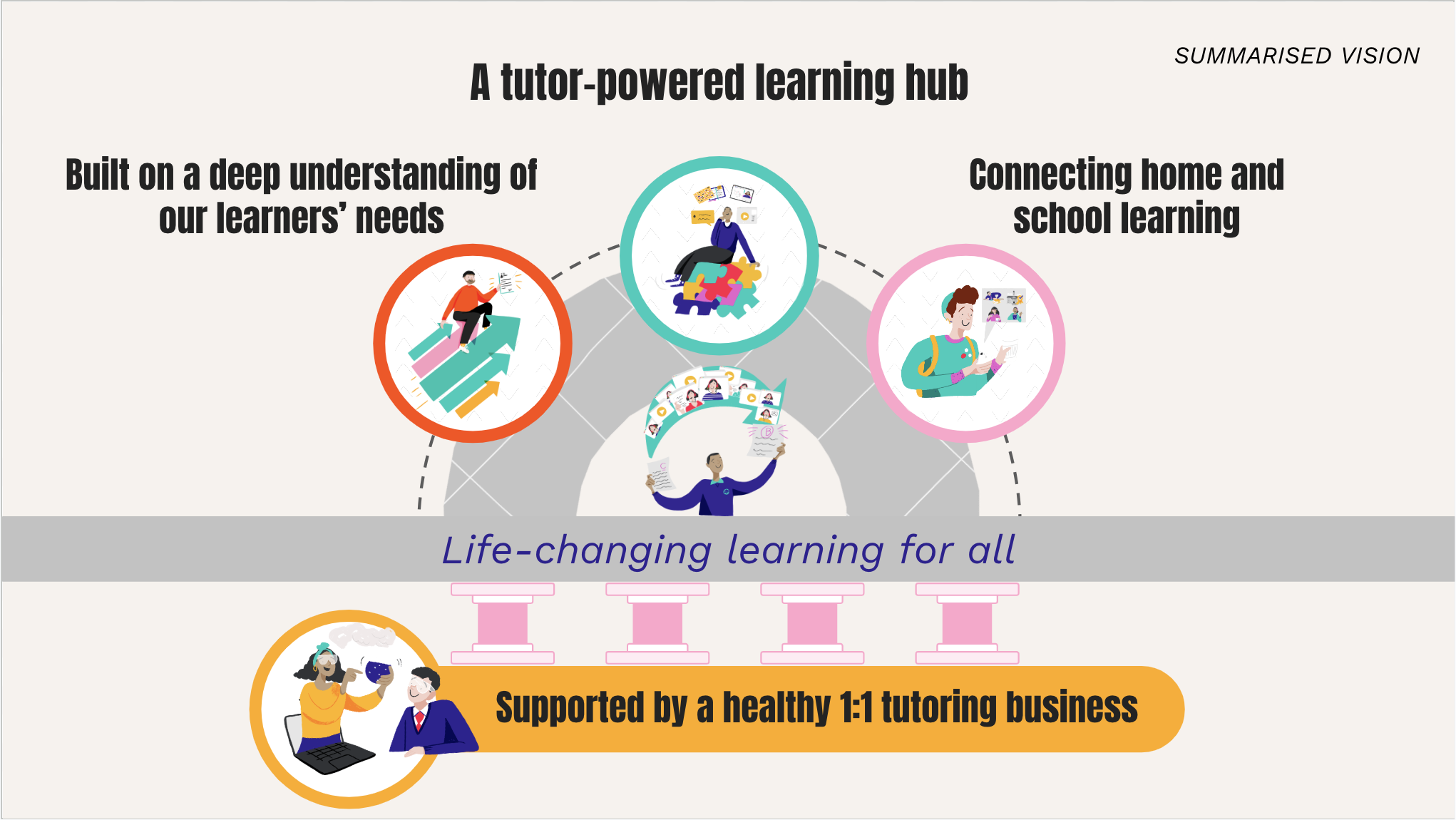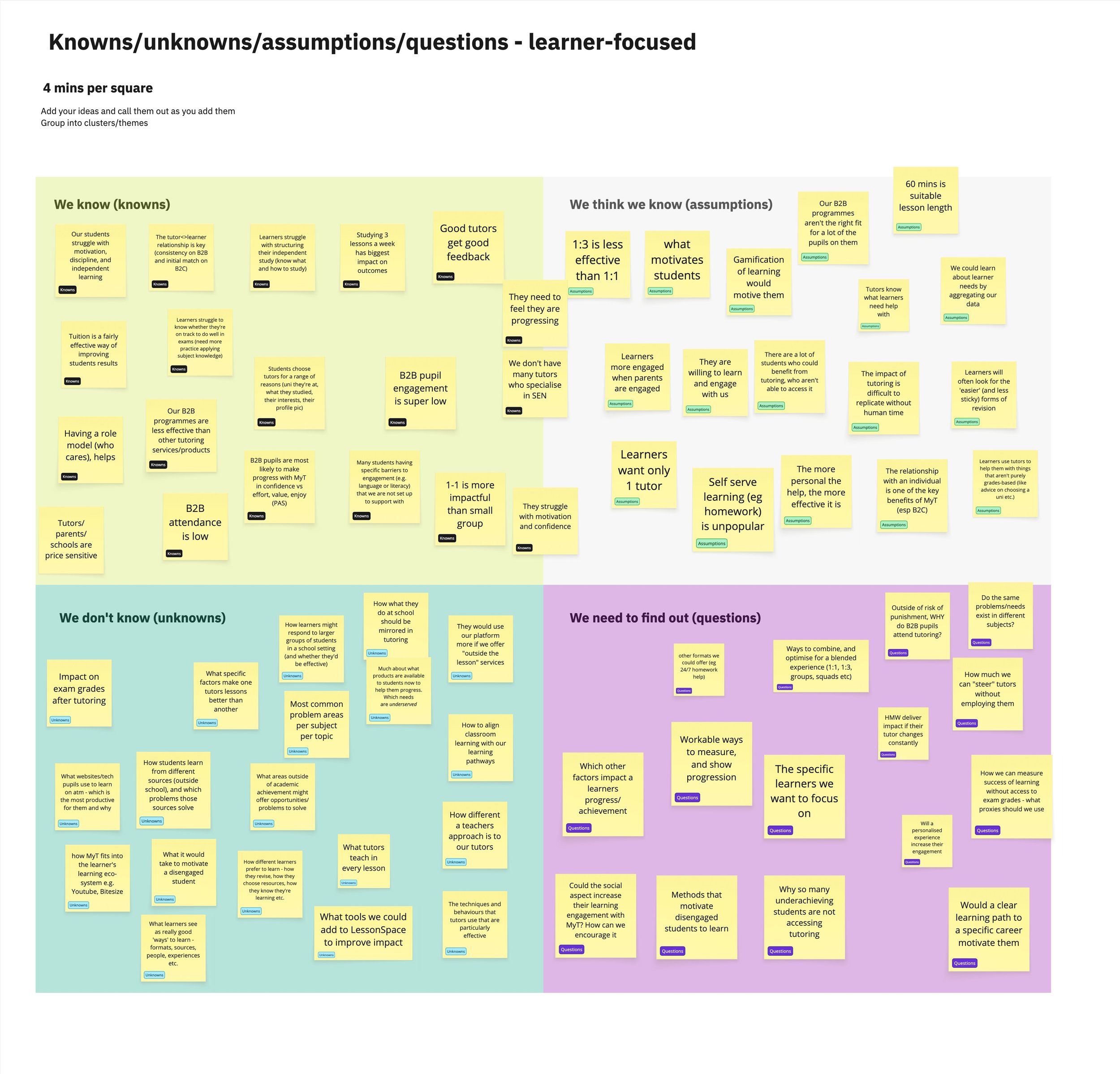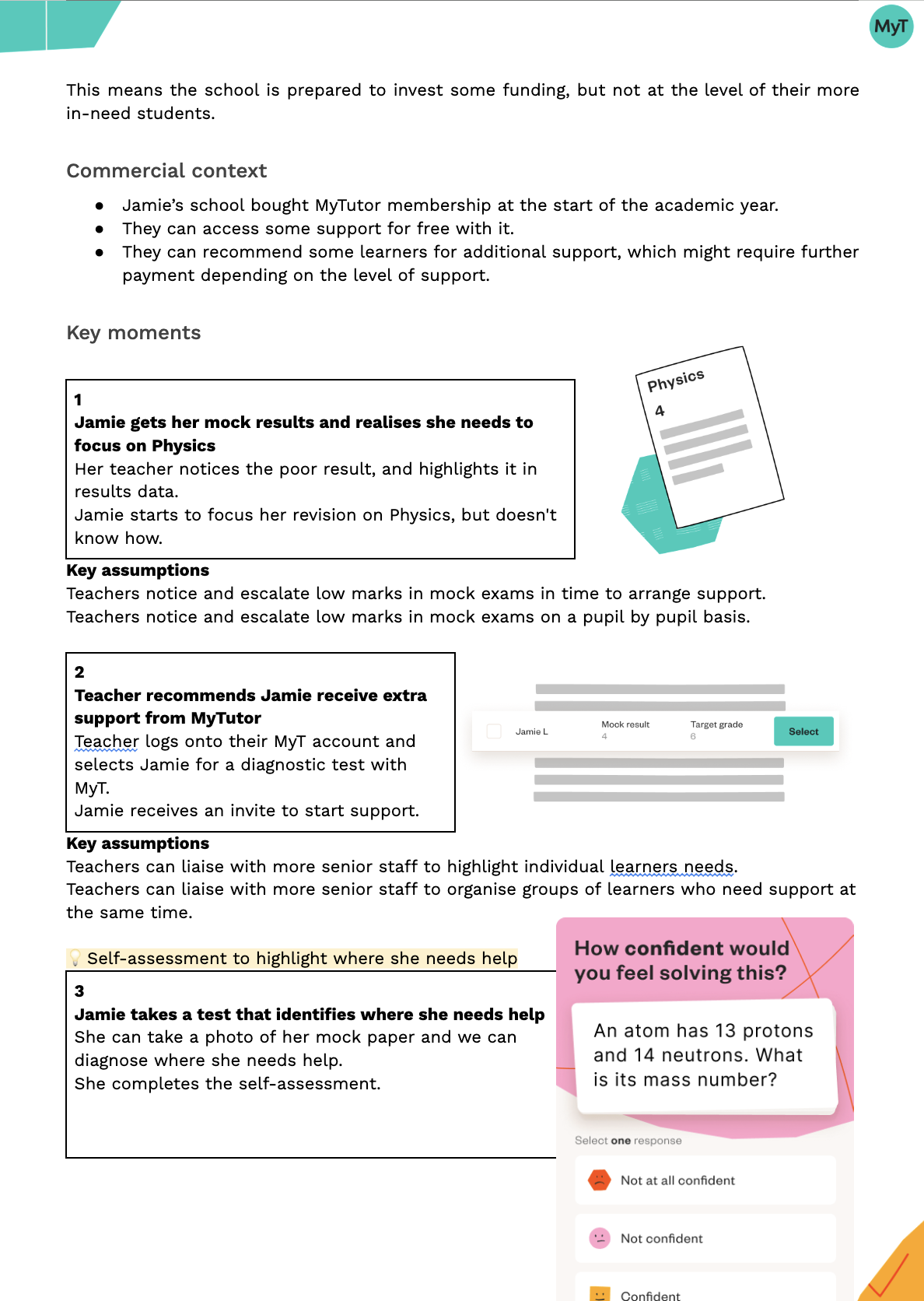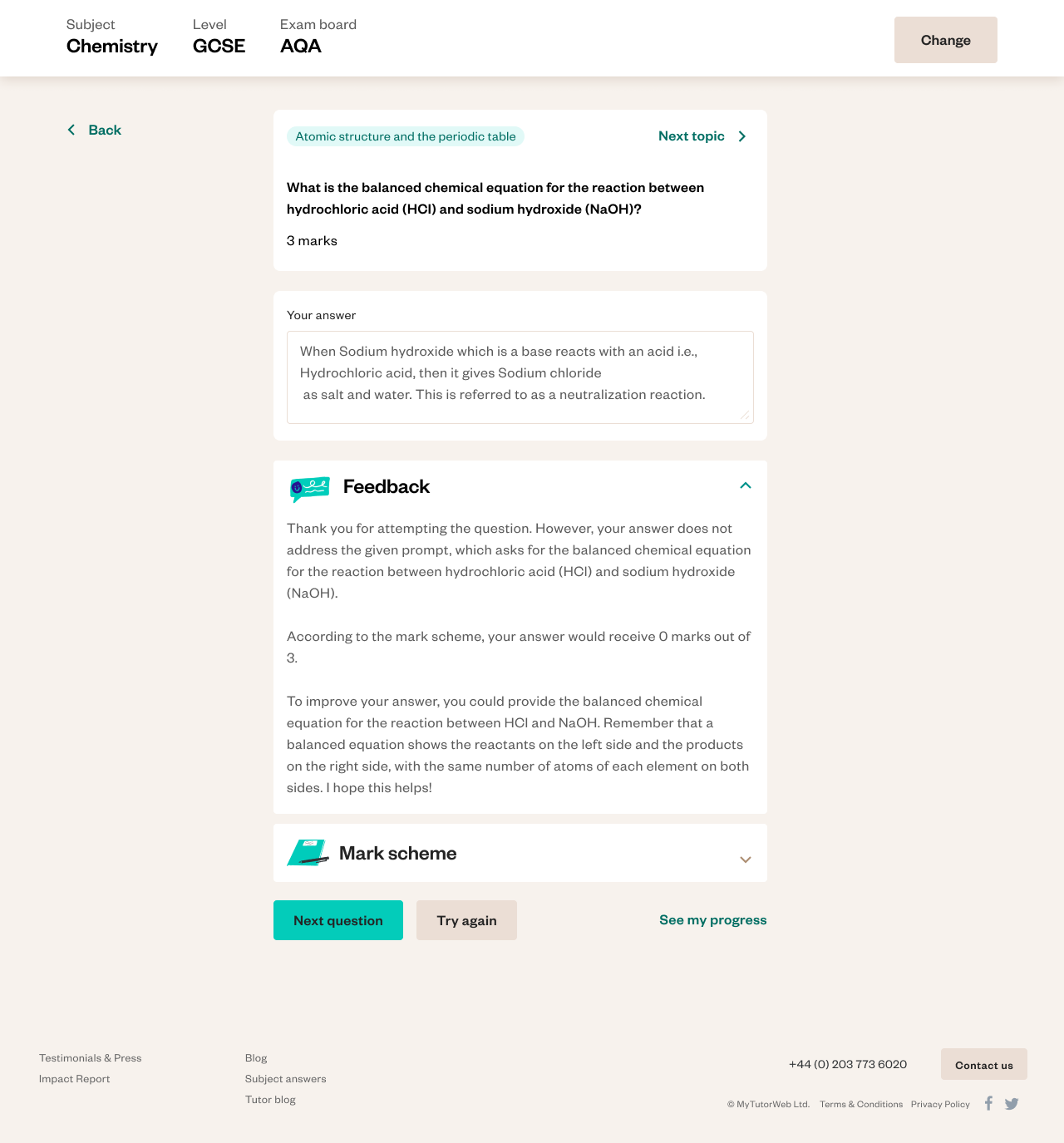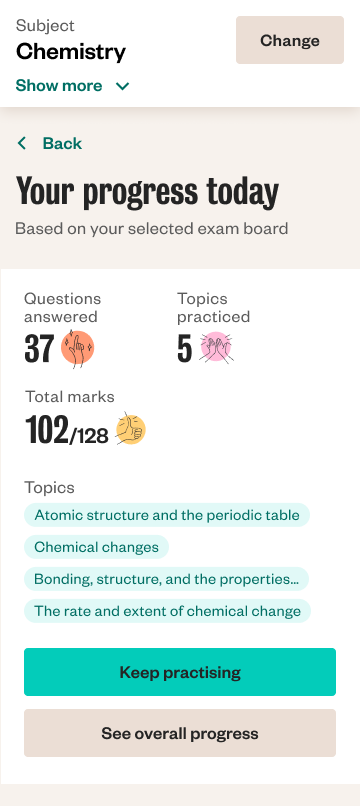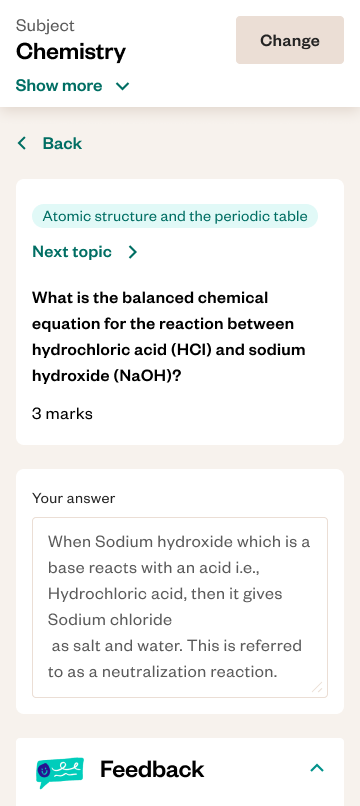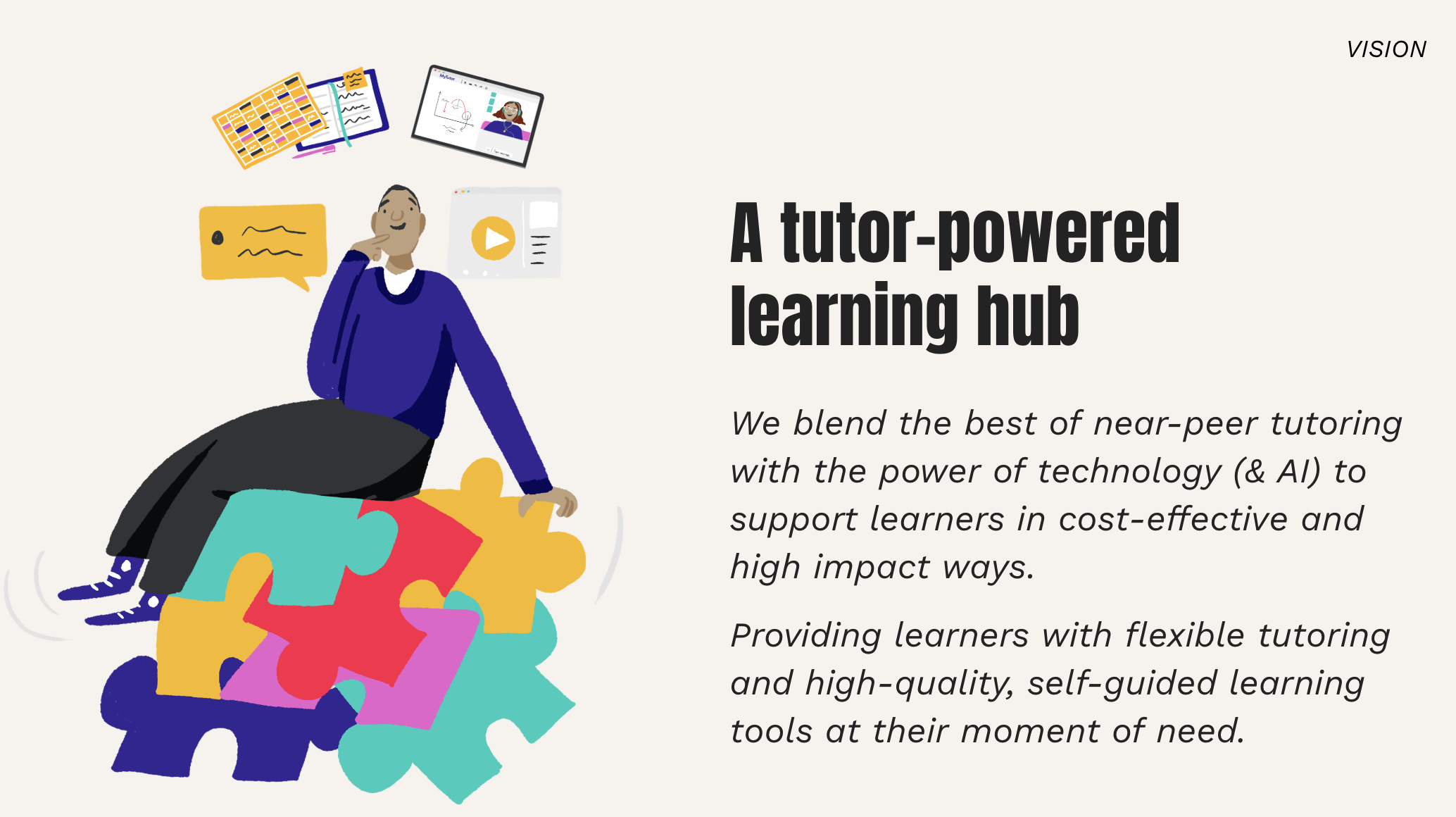Imagining a younger future
GENERATIVE AI • PRODUCT STRATEGY • EXPERIMENTATION
For too long, the learners at the heart of MyTutor had been overlooked. While parents and tutors shaped most of our decisions, the ones actually doing the learning, had little influence on the experience.
By shifting our focus to their needs, we saw an opportunity to reimagine the product and unlock entirely new potential for the business.
Context
At MyTutor, our mission was clear: life-changing tuition for all. But with a goal to impact one million learners, our existing model of 1:1 and small group tuition wouldn’t get us there fast enough. We needed a radical rethink; not just of what we offered, but of who we served.
Role
I co-led on research and design with another Designer. We worked closely with a Senior Product Manager, our CPO, the General Manager, and a group of commercial stakeholders.
Impact
The learner-led product vision we created helped secure £4M in follow-on investment.
The strategy helped the product team and the wider business better understand and prioritise learners. It led to a series of experiments and new products, some using AI, that responded to learner needs and broadened our overall offering.
The problem
At its core, this was both a user and business challenge. We didn’t fully understand what made tutoring truly effective for learners, and without that insight, we couldn’t confidently evolve our proposition. At the same time, our heavy reliance on live tutoring constrained our ability to scale, both financially and operationally.
We believed that by deeply understanding learners (their contexts, motivations, and barriers), we could shape new interventions that were both more accessible and more impactful.
The approach
Discovery phase: problem definition
We began by mapping out what we already knew — and, more importantly, what we didn’t — to shape the right questions for discovery.
Our discovery phase had three core strands:
Interviews with learners to explore their needs and motivations
Conversations with teachers and tutors to understand the challenges they see learners facing in today’s education system
Rapid experiments to explore short-term hypotheses
We focused on areas where we saw both user need and commercial opportunity — things like independent study, peer learning, and the gaps between school and home support. Through interviews with learners and teachers, we identified recurring pain points and patterns of behaviour. These became the foundation for new hypotheses and potential product ideas.
To support alignment, we facilitated cross-functional workshops that helped us prioritise these hypotheses using viability, desirability, and feasibility criteria. These sessions helped the wider team see how their individual work connected to a larger, shared goal.
Discovery phase: Early concepts and testing
As our understanding deepened, we started designing and testing lightweight concepts. Some were entirely off-product, like email-based services or tutor-led trials. Others explored ways we might blend self-guided study with tutor feedback, a model we suspected could both scale and support learners more flexibly.
We developed scenario personas to reflect the key learner archetypes we’d uncovered. For example, the overwhelmed GCSE student who needed structure, or the confident student looking for exam polish. These helped the team communicate and evaluate which learners a given concept was truly serving. We validated our personas and early concepts with teachers, to ensure they resonated with real classroom experiences. These conversations gave us confidence that our emerging ideas addressed genuine gaps in support and helped us sharpen how we described their value.
Experiment: Essay feedback tool
One early experiment was an essay feedback tool, which allowed learners to submit written answers and receive structured responses from tutors. I tested different feedback formats, tones, and levels of detail, and iterated based on both tutor input and learner satisfaction. For example, I worked with tutors to improve how accurately they addressed command words, a small detail with a big impact on perceived usefulness.
Experiment: AI-powered exam practice tool
One of the experiments we developed further was an AI-powered exam practice tool aimed at addressing two key challenges: helping learners identify where to focus their efforts and reducing the delay in receiving feedback from teachers. During a hackathon, we created an early prototype that generated syllabus-specific questions and automatically marked learner responses. Building on this idea, our team collaborated with Chemistry teachers and tutors to refine the prompts and improve the tool’s accuracy. Although we initially designed it for mobile use, we later discovered that learners preferred using it on their laptops, where they were less prone to distractions.
As learners began interacting with the tool, several issues surfaced. These included repetitive questions, incorrect use of command words (such as “define”, “explain”), and questions being framed as multiple choice when they shouldn’t be. We also observed inconsistencies in the tone of feedback responses. To address this, we worked closely with our Chemistry teachers to improve the precision of command words and enhanced the prompts to ensure learners received more accurate and helpful feedback
Board deck
Finally, we created a board-facing deck outlining our research, the strategy we developed, and the outcomes of the experiments which led to the 4M in funding.
The Impact
The work we delivered shaped a key part of MyTutor’s updated product strategy, one that focused not just on tutors and parents, but on the learners themselves. The strategy became a central piece in the company’s revised vision, which was used to secure an additional £4 million in investment from existing backers.
Internally, it helped reorient how the business thought about learners, not just as recipients of tuition, but as users with needs, goals, and preferences that could guide product development. It also gave the product org a clearer framework for designing and evaluating interventions beyond traditional tutoring.
One area we grew particularly confident in was the combination of self-guided study with targeted tutor support. This blended model offered a scalable, cost-effective way to deliver meaningful help and positioned us strongly in a crowded and competitive space.
The learnings
This project wasn't just about coming up with some new, flashy ideas. It was about building the muscle to learn, test, and adapt faster and doing so in a way that put learners at the heart of everything we do moving forward.
The work gave us a clearer picture of who we were designing for, what success looked like for them, and how we could get there. It also proved that thoughtful research, fast experimentation, and strategic alignment can come together to drive meaningful product and business change.

